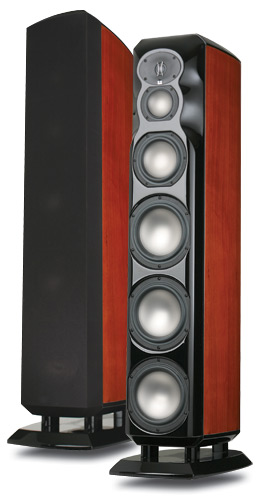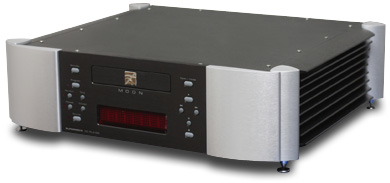 May 2010
A Cheapskate and a Cynic? Or a Critic?
 I think that many people
misunderstand me because of my reputation for championing so many value-priced, affordable
audio components, and for consistently questioning the worth of so much of the
ultra-expensive stuff. Some think I’m a cheapskate with a chip on his shoulder about
things he can’t afford, and a cynic about high prices. I know because they’ve
told me so. But do these same people notice when I review and recommend products with
price tags that many do think are sky-high? I think that many people
misunderstand me because of my reputation for championing so many value-priced, affordable
audio components, and for consistently questioning the worth of so much of the
ultra-expensive stuff. Some think I’m a cheapskate with a chip on his shoulder about
things he can’t afford, and a cynic about high prices. I know because they’ve
told me so. But do these same people notice when I review and recommend products with
price tags that many do think are sky-high?
This issue came up again recently when a company rep called
to offer to send me one of his products to review -- something priced in the tens of
thousands of dollars. He said, "It will be interesting to see if you like it
because . . . well, we all know your reputation for hating stuff that costs this
much."
Hate seems too strong a word. And does all
mean everyone? As I explained to him my position, the idea for this editorial was born.
"I don’t mind expensive stuff when it’s worth
it," I began. I then told him what worth means to me. A pricey product
shouldn’t only look good and be better built, it must also actually sound
better than something less expensive. The entire point of making and owning high-fidelity
equipment is, obviously, to attain the highest level of reproduction of sound by being as
faithful as possible to the original musical signal. I think most audiophiles prioritize
sound first, with appearance and other things coming next. If we pay a lot more, we should
get more of everything: better appearance, better build quality, better sound.
That sounds simple enough, but it’s not always the
case. Far too often, I’m let down. It’s not uncommon these days to find
loudspeakers priced in the many thousands of dollars, but with performance that can be
bettered by something that costs much less. For instance, one day I had on hand nine
two-way loudspeakers that ranged in price from $300 to over $10,000/pair. The most
expensive speaker had the best build quality and the nicest appearance -- it was finished
in flashy automotive paint -- but to my ears, every one of the eight less-expensive
speakers sounded better.
About eight years ago, I and two other members of our team
evaluated four speakers under blind conditions in the listening room of Canada’s
National Research Council (NRC). Three of the speakers were priced between $300 and
$500/pair, and one cost $2000/pair. The three of us agreed: In every listening
test, the most expensive speaker placed last.
How can these things happen? Do manufacturers of such
speakers ever test their products against those of their competitors, to hear how their
own products stack up on the bases of performance and price? Maybe yes, but maybe not. Are
some manufacturers more skilled at designing and making better-sounding products at lower
cost? Yes, that’s likely. There are other reasons, too. The point is that a higher
price does not guarantee better sound. In fact, sometimes the level of sound quality
doesn’t rise at all with the price -- or, as pointed out above, it actually falls.
This sort of thing doesn’t happen only with
loudspeakers. Probably the best-known high-priced ripoff these days is Lexicon’s
BD-30 universal Blu-ray player, which the folks at Audioholics exposed for what it
really is: a $500 Oppo BDP-83 slipped into a sturdier chassis with a price tag of $3500. Audioholics
found that the BD-30’s image and sound qualities were no better than those of the
BDP-83. It’s not often that we commend our competitors, but good for Audioholics
for calling Lexicon’s bluff. A thicker faceplate doesn’t justify a $3000 price
increase, nor does a longer warranty -- you can buy seven BDP-83s for the price of
one BD-30. Lexicon muttered something about changing the user interface, but how much
could that be worth? I’ll say it again: As the price increases, I want to see the
sound quality increase -- and, in this case, the video quality as well. From what I can
tell, the BD-30 delivered neither.
But that doesn’t mean that all high-priced
components are ripoffs. The best-sounding components I’ve heard and reviewed have
also been some of the most expensive -- though they haven’t been the most
expensive. When I find something that offers sound quality that’s a cut above the
rest, I’m happy to praise it even if its price is high.
The best example is Revel’s Ultima Salon2 speaker,
which I reviewed in December 2009, and which won our 2009 Edge of the Art
Award. Revel is owned by Harman International, which also owns Lexicon -- but the Salon2
is no rebadged speaker originally designed by someone else and clothed in a fancier
cabinet. It was designed in-house by Revel, and, in my opinion, is worth every penny of
its list price of $21,998/pair. I’ve heard no other full-range loudspeaker near that
price that can match its combination of extremely deep bass, supersweet and extended
highs, and a midrange transparency that’s akin to that of an electrostatic design.
All told, it’s the best speaker I’ve reviewed.
 Ditto for Simaudio’s Moon Evolution SuperNova CD
player, which cost $5900 when I reviewed it. That’s a lot of scratch for a CD player, and
it’s not the slam-dunk that the Salon2 is. There are CD players that come strikingly
close to the SuperNova’s performance for a lot less; the NAD C 565BEE, for example,
is a killer for $799. But the SuperNova is not only extremely well built -- overbuilt
might be a better word -- its sound quality is better than that of almost every other CD
player I’ve heard. Which is why it’s still my reference player. Ditto for Simaudio’s Moon Evolution SuperNova CD
player, which cost $5900 when I reviewed it. That’s a lot of scratch for a CD player, and
it’s not the slam-dunk that the Salon2 is. There are CD players that come strikingly
close to the SuperNova’s performance for a lot less; the NAD C 565BEE, for example,
is a killer for $799. But the SuperNova is not only extremely well built -- overbuilt
might be a better word -- its sound quality is better than that of almost every other CD
player I’ve heard. Which is why it’s still my reference player.
I’ve been called a cheapskate because I’ve
praised so many lower-priced products, and I’ve been labeled cynical for being
so skeptical of very high prices. To me, a better word would be critical -- a
faculty needed to be able to review anything, including audio components, and especially
at a time when the prices of audio gear have risen to a level that borders on the insane.
I have no problem with a manufacturer charging more than the rest, provided that,
in addition to looking better and lasting longer, the component also sounds better.
Isn’t that what the pursuit of high fidelity is all about?
. . . Doug Schneider
das@soundstagenetwork.com
|

